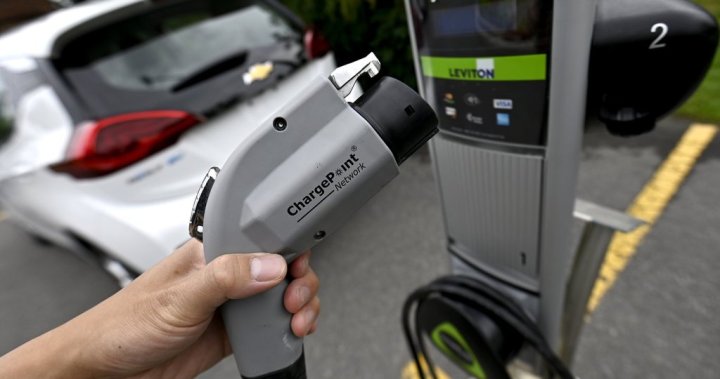As Canada stands at the crossroads of its automotive future, the federal government faces mounting pressure to finalize its electric vehicle sales mandate—a policy that could fundamentally reshape the country’s transportation landscape for decades to come.
Clean Energy Canada, an influential climate and clean energy think tank, has intensified calls for Ottawa to stop delaying implementation of the mandate, which would require automakers to ensure 20% of their new vehicle sales are zero-emission by 2026, gradually increasing to 100% by 2035.
“The longer we wait, the further behind Canada falls in the global EV race,” said Merran Smith, executive director at Clean Energy Canada. “Every day of delay means more gasoline-powered vehicles entering our roads that will continue polluting for 15 to 20 years.”
The proposed mandate represents a cornerstone of Canada’s emissions reduction strategy. Transportation accounts for approximately 25% of the country’s total greenhouse gas emissions, making it the second-largest source after the oil and gas sector. According to Environment and Climate Change Canada, transitioning to electric vehicles could reduce emissions by up to 35 million tonnes annually by 2050.
Industry stakeholders remain divided on the policy. The Canadian Vehicle Manufacturers’ Association has expressed concerns about implementation timelines, suggesting they may be too ambitious given current infrastructure limitations. Meanwhile, companies like Tesla and BYD have publicly supported the mandate, seeing it as an opportunity to expand their market share in Canada.
“What we’re seeing is a classic tension between environmental imperatives and short-term economic concerns,” noted Dr. Werner Antweiler, professor at the UBC Sauder School of Business. “However, the evidence suggests countries with clear EV policies ultimately create more stable investment environments for both manufacturers and consumers.”
Consumer adoption presents another challenge. While EV sales have grown substantially—reaching 10.8% of new vehicle sales in the third quarter of 2023, up from 8.5% a year earlier—concerns about charging infrastructure, battery range, and upfront costs persist. The federal government has invested over $1 billion in charging infrastructure and purchase incentives, yet gaps remain, particularly in rural and remote communities.
Provincial policies further complicate the national landscape. British Columbia and Quebec lead with their own ZEV mandates and have achieved the highest adoption rates. In contrast, other provinces have shown reluctance to embrace similar measures, creating a patchwork of policies across the country.
The international context adds urgency to Canada’s decision. The European Union has approved a similar mandate ending new combustion engine sales by 2035, while California—whose vehicle standards Canada has historically followed—implemented its own ZEV mandate years ago. As global markets shift toward electrification, Canada risks becoming a dumping ground for combustion vehicles if it fails to align with international trends.
Financial analysts emphasize the economic dimension. “Auto manufacturing represents about 10% of Canada’s manufacturing GDP,” said Rebekah Young, economist at Scotiabank. “Without clear policy signals, investments in EV manufacturing could flow to jurisdictions with more predictable regulatory environments, particularly the United States with its Inflation Reduction Act incentives.”
As the federal government deliberates, the clock ticks on both climate commitments and industrial strategy. With the consultation period now closed, all eyes are on Environment Minister Steven Guilbeault, who is expected to announce a decision in the coming weeks.
What remains to be seen is whether Canada will choose to lead or follow in the global transition to electric mobility—and at what cost to its climate goals, auto industry, and position in the emerging clean transportation economy?














